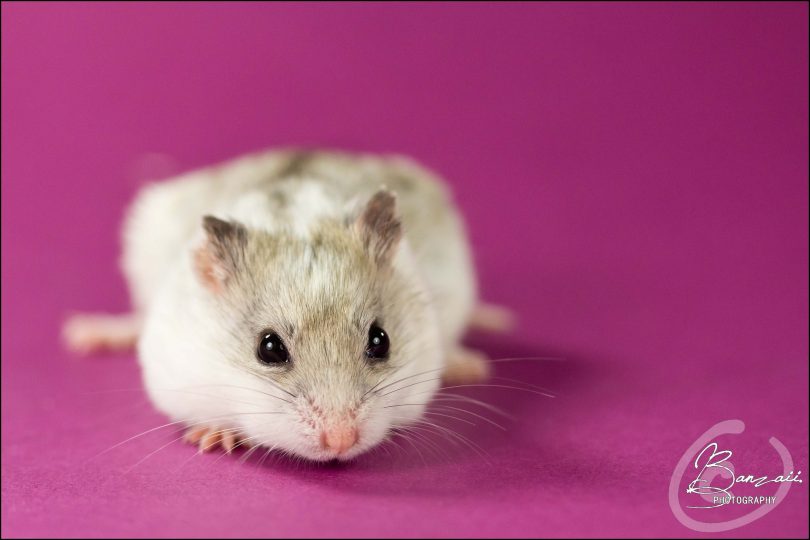It’s not uncommon for pet owners to believe that a hamster is dead, only to see it return well and alive. Why are hamsters so often mistaken for being dead?
The mystery here is hibernation. Hamsters, like bears, may hibernate.
Read this article to identify and care for a hibernating hamster.
Is Your Hamster Hibernating or Dead?
Hamsters are fascinating creatures that undergo a hibernations cycle. However, not all hamsters hibernate, only some species do.
The Syrian hamster is a famous rodent that hibernates. The process may occur in mixed hamster breeds that have the Syrian blood.
Pet owners can mistake a hibernating hamster for a dead one. The animals may appear dead when hibernating. For example, it may have its feet sticking upwards and lying on its back.
But there are tell-tale signs that your hamster is not dead, just hibernating. Here’s how to tell the difference:
- A hibernating hamster still has a pulse. It may be slow, but you can notice it by gently pressing your arm to the animal’s chest.
- Hibernating hamsters do breathe. The breathing is not as rapid, but you can feel it under their nose.
- Hamsters twitch when their whiskers are touched gently, even when hibernating.
- Hibernating hamsters feel colder than usual. But their cheek pouches should be warmer in relation to the rest of the body.
- The hamster will begin to stir when you move them to a warmer spot.
On the other hand, a dead hamster has no pulse, doesn’t breathe, and will begin to smell in a day or two.
If you are not sure, you can always take the hamster to a veterinarian for a checkup. A vet would be able to tell for sure if the hamster is hibernating.
Why do Hamsters Hibernate Indoors?
Going into hibernation is perfectly natural. It’s an evolutionary defense mechanism against the cold and scarcity of food in winter.
Hamsters that live indoors are exposed to warmth from air conditioning and artificial lighting. Therefore, they may not enter consistent hibernation cycles the way wild animals do.
However, hamsters can suddenly go into hibernation mode if the temperature indoors drops. Cold temperature and changes in lighting can trigger an internal response that makes the hamster go into hibernation.
It’s unlikely that your hamster would go into hibernation if it’s adequately warm and experiences enough light.
It’s important to note that some hamsters may become hypothermic in cold conditions. Hypothermic hamsters draw breaths only every two minutes or so. Hypothermia is life-threatening and requires emergency medical care.
What to Do When Your Hamster Hibernates
A hibernating hamster is not a major cause for concern. But pet owners should know that hamsters don’t hibernate for months.
A pet hamster would get up occasionally from hibernation to eat. Therefore, you should do the following to take good care of a hibernating hamster:
- Ensure it has access to fresh food and clean water
- Place the hamster in a warm area so it’s not at risk of hypothermia
- Have appropriate and adequate nesting material
- Keep the hamster’s room temperature stable
How to Wake Up a Hibernating Hamster
You can, alternatively, wake up a hibernating hamster. It may be a safer choice to reduce the risk of hypothermia.
To wake a hibernating hamster, you need to increase its body temperature. Here’s what you can do:
- Warm it up using your body heat. You can bring the hamster close to your body to provide warmth. You can gently rub its fur to make it warm.
- Wrap the hamster in a towel and place it near a hot water bottle. Make sure the hamster doesn’t directly touch the bottle and get injured.
- Place the hamster on a heating pad. The pad should not be heated to more than 90°F (32°C). Keep the hamster on the pad for up to an hour.
Avoid the following:
- Don’t introduce the hamster to heat rapidly.
- The heat must be moderate. Don’t use intense heat to wake up your hamster.
- Don’t give it milk. It might prove a choking hazard.
You don’t need to wake up a hibernating hamster unless it’s at risk of contracting hypothermia. The British RSPCA recommends allowing hamsters to hibernate unless it’s at risk of becoming unwell.
Do You Need to Prevent Hibernation?
Hibernation isn’t harmful to a hamster typically. It’s also highly unlikely that a hamster with adequate warmth would go into hibernation.
Hamsters may go into hibernation naturally because of its breed or age. So you might not be able to prevent the situation.
Pet owners don’t need to prevent hibernation for these reasons. However, hamster owners must prevent the hamsters’ cages from getting too cold. Dangerously low temperatures could make your hamster hypothermic, which could kill it, as mentioned above.
There’s no need to panic if you notice your hamster hibernating. You can consult a vet if you suspect it’s ill, rather than hibernating.
Featured Image By Banzaii





